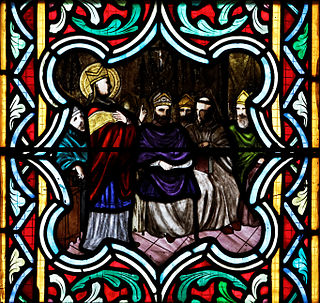 W
WThe Catepanate of Italy was a province of the Byzantine Empire, comprising mainland Italy south of a line drawn from Monte Gargano to the Gulf of Salerno. Amalfi and Naples, although north of that line, maintained allegiance to Constantinople through the catepan. The Italian region of Capitanata derives its name from the Catepanate.
 W
WThe Council of Bari was convened and presided over by Pope Urban II in Bari, Italy, in October 1098 during the First Crusade. It was attended by 185 bishops, both Catholic and Orthodox.
 W
WThe Duchy of Amalfi or the Republic of Amalfi was a de facto independent state centered on the Southern Italian city of Amalfi during the 10th and 11th centuries. The city and its territory were originally part of the larger ducatus Neapolitanus, governed by a patrician, but it extracted itself from Byzantine vassalage and first elected a duke in 958. During the 10th and 11th centuries Amalfi was estimated to have a population of 50,000–70,000 people. It rose to become an economic powerhouse, a commercial center whose merchants dominated Mediterranean and Italian trade in IX and X century, before being surpassed and superseded by the other maritime republics of the North, like Pisa, Venice, and Genoa. In 1073, Amalfi lost its independence, falling to Norman invasion and subsequently to Pisa in 1137.
 W
WThe history of Islam in Sicily and Southern Italy began with the first Arab settlement in Sicily, at Mazara, which was captured in 827. The subsequent rule of Sicily and Malta started in the 10th century. The Emirate of Sicily lasted from 831 until 1061, and controlled the whole island by 902. Though Sicily was the primary Muslim stronghold in Italy, some temporary footholds, the most substantial of which was the port city of Bari, were established on the mainland peninsula, especially in mainland Southern Italy, though Muslim raids, mainly those of Muhammad I ibn al-Aghlab, reached as far north as Naples, Rome and the northern region of Piedmont. The Muslim raids were part of a larger struggle for power in Italy and Europe, with Christian Byzantine, Frankish, Norman and local Italian forces also competing for control. Muslims were sometimes sought as allies by various Christian factions against other factions.
 W
WThe Norman conquest of southern Italy lasted from 999 to 1139, involving many battles and independent conquerors. In 1130, the territories in southern Italy united as the Kingdom of Sicily, which included the island of Sicily, the southern third of the Italian Peninsula, the archipelago of Malta, and parts of North Africa.
 W
WThe pataria was an eleventh-century movement focused on the city of Milan in northern Italy, which aimed to reform the clergy and ecclesiastic government within the city and its ecclesiastical province, in support of Papal sanctions against simony and clerical marriage. Those involved in the movement were called patarini, patarines or patarenes, a word chosen by their opponents, the etymology of which is unclear. The movement, associated with urban unrest in the city of Milan, is generally considered to have begun in 1057 and ended in 1075.
 W
WThe Republic of Ancona was a medieval commune and maritime republic notable for its economic development and maritime trade, particularly with the Byzantine Empire and Eastern Mediterranean, although somewhat confined by Venetian supremacy on the sea. It enjoyed excellent relations with the Kingdom of Hungary, was an ally of the Republic of Ragusa, and maintained good relations with the Turks. All these relationships enabled it to serve as central Italy's gateway to the Orient.